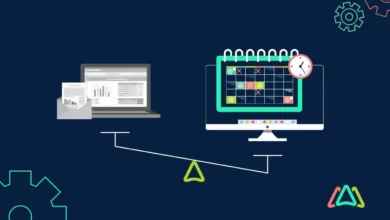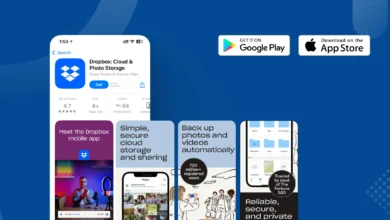10 Ways to Elevate Employee Recognition with Digital Cards

Recognizing employees isn’t just a nice gesture, it’s a powerful way to boost morale, build trust, and strengthen team culture. In today’s digital work environment, traditional recognition methods don’t always reach remote or hybrid teams. That’s where digital cards come in. Simple to send and easy to personalize, they offer a modern way to make employees feel seen and valued, no matter where they work.
In this blog, we’ll explore 10 easy and effective ways to use digital cards to elevate employee recognition, helping your team feel appreciated, connected, and motivated, all through a tool that fits today’s workplace.
1. Real-Time Recognition Through Integrated Digital Cards
The power of immediate appreciation cannot be overstated. When recognition happens in the flow of work, it strengthens the connection between actions and acknowledgment, making both more meaningful.
Instant Appreciation in Collaboration Tools
Modern digital cards integrate seamlessly with Slack, Teams, and other workplace communication tools. This integration allows managers and peers to recognize achievements the moment they happen, whether it’s completing a challenging project or helping a colleague solve a problem. When recognition appears in the channels where work happens, it reinforces positive behaviors immediately.
Creating Recognition Moments During Meetings
Virtual team gatherings offer perfect opportunities for public appreciation. Many organizations now dedicate time in regular meetings to share digital cards celebrating recent accomplishments. This practice not only honors individual contributions but also demonstrates to the entire team what excellence looks like.
The Psychology of Immediate Feedback
Timely recognition strengthens neural pathways that connect effort and reward. When employees receive appreciation shortly after demonstrating desired behaviors, they’re more likely to repeat those actions. This psychological reinforcement makes real-time digital recognition tools particularly effective for shaping organizational culture.
While immediate recognition creates powerful moments, personalizing these experiences takes employee appreciation to new heights. AI-powered digital cards now offer unprecedented customization that makes each recognition moment uniquely meaningful.
2. Personalized Recognition with AI-Powered Digital Cards
Generic recognition feels hollow compared to personalized appreciation. Today’s technology enables tailored approaches that acknowledge individuals’ unique contributions and preferences.
Beyond Templates: AI-Customized Experiences
Artificial intelligence now powers recognition programs that analyze employee preferences and work styles. These systems suggest personalization options that match the recipient’s communication style, visual preferences, and motivational triggers. The result is recognition that feels authentically crafted for each individual.
Accessibility Considerations in Personalization
Thoughtful personalization includes accommodating different abilities and preferences. Some employees may prefer audio messages over text, while others might appreciate high-contrast visuals. Employee appreciation ideas should include accessibility options that ensure everyone can fully experience the recognition they receive.
Personalization creates memorable individual experiences, but what happens when we add elements of play and achievement? Gamified recognition systems transform appreciation into an engaging, ongoing journey.
3. Gamified Recognition Systems with Digital Card Collections
Gamification taps into our innate love of collection, achievement, and friendly competition. When applied to recognition, it creates ongoing engagement with appreciation programs.
Building Achievement Collections
Digital recognition platforms now allow employees to build personal collections of digital cards they’ve received. Some systems create collectible series with different designs or “rarity levels,” making each piece of recognition part of a larger narrative of achievement. These collections become digital trophies that employees can review and share.
Points and Rewards Integration
Many workplace recognition systems connect digital cards to point values that accumulate toward tangible rewards. This approach combines the emotional benefit of recognition with practical incentives, creating multiple layers of motivation. Employees appreciate both the acknowledgment and the ability to select personalized employee rewards that matter to them.
Creating Friendly Competition
Leaderboards and team challenges add another dimension to recognition systems. When groups collaborate toward recognition goals, they simultaneously build camaraderie and celebrate individual contributions. The key is designing competitions that emphasize cooperation rather than creating unhealthy rivalries.
Beyond collecting achievements, modern recognition thrives on interaction. Interactive digital cards create dynamic experiences that engage recipients and their teammates in entirely new ways.
4. Interactive Digital Cards That Engage Teams
Static messages have given way to dynamic, interactive experiences that create deeper emotional connections and shared moments of celebration.
Beyond Static Messages
Today’s digital cards incorporate interactive elements like video messages, animated graphics, and clickable features that reveal additional content. These engaging components transform recognition from a passive experience into an active one. Recipients don’t just read appreciation, they explore it through multiple sensory channels.
Collaborative Team Recognition
Interactive platforms enable multiple contributors to add personalized messages to a single recognition moment. These collaborative cards celebrate recipients while strengthening team bonds. When employees see colleagues joining in their celebration, it reinforces their sense of belonging within the organization.
Creating Shared Celebration Rituals
Some organizations establish specific digital rituals around recognition, like virtual “appreciation walls” where teams gather to unveil new recognition cards. These shared experiences create moments of connection that unite teams regardless of physical location, contributing to stronger employee morale.
While engaging interactions drive emotional connection, data-driven approaches ensure recognition achieves measurable results. Smart digital cards provide the analytics needed to optimize your recognition strategy.
5. Data-Driven Recognition with Smart Digital Cards
Strategic recognition requires measurement and optimization. Today’s digital platforms provide unprecedented insights into recognition effectiveness.
Leveraging Analytics for Impact
Modern digital recognition tools track which cards resonate most with employees. They measure open rates, engagement time, and emotional responses through surveys or reaction buttons. This data helps organizations understand which recognition approaches work best for different personality types, departments, or achievement categories.
Optimizing Recognition Timing
Analytics reveal optimal timing patterns for recognition. Some employees may respond best to appreciation received early in the day, while others might prefer end-of-week acknowledgments. Smart systems can identify these patterns and suggest ideal moments for maximum impact.
Measuring Recognition ROI
Advanced platforms connect recognition data with performance metrics, enabling organizations to quantify the benefits of employee recognition. This analysis might reveal correlations between recognition frequency and productivity, innovation, or retention, providing concrete evidence of the program’s business impact.
With robust data supporting recognition efforts, organizations can strategically align appreciation with their core values. Value-based digital cards reinforce what matters most to your company culture.
6. Cultural Alignment Through Value-Based Digital Cards
Recognition becomes more powerful when it reinforces organizational values and purpose. Strategically designed programs connect individual actions to larger cultural priorities.
Reinforcing Values Through Recognition
Digital cards designed around specific company values visually reinforce what matters most. When an employee receives a “Collaboration Champion” card featuring the company’s teamwork value, it explicitly connects their behavior to the organization’s cultural foundation. This reinforcement helps employees internalize values.
Creating Value-Specific Recognition Templates
Many organizations develop recognition templates for each core value, with distinct visual identities and messaging frameworks. These templates help managers and peers provide recognition that consistently reinforces cultural priorities while allowing for personalized messages within that framework.
Building Recognition Narratives
The most sophisticated recognition programs create ongoing narratives that tell the organization’s story through individual accomplishments. Each recognition moment becomes part of a larger cultural conversation about “who we are” and “what we value,” strengthening employees’ connection to organizational purpose.
A strong values-based recognition program builds cultural cohesion, but how do you maintain this across global teams? Multi-language digital cards bridge cultural divides while preserving meaningful appreciation.
7. Global Recognition Through Multi-Language Digital Cards
As organizations expand globally, recognition must transcend language barriers and cultural differences to remain meaningful for all team members.
Breaking Language Barriers
Advanced digital cards now feature automated translation capabilities that preserve both literal meaning and emotional nuance. These systems ensure that recognition feels authentic regardless of the recipient’s primary language, creating equity in appreciation across global teams.
Cultural Customization
Effective global recognition acknowledges cultural differences in how appreciation is expressed and received. Some cultures value public recognition, while others prefer private acknowledgment. Smart digital recognition tools adapt delivery methods based on cultural preferences while maintaining consistency in the underlying recognition program.
Inclusive Recognition Design
Truly global recognition systems incorporate diverse visual elements, references, and symbols that resonate across cultures. They avoid potentially confusing idioms or culture-specific references, ensuring the core message of appreciation comes through clearly for every recipient.
Inclusive daily recognition strengthens teams worldwide, yet career milestones still deserve special attention. Multimedia digital cards transform these important moments into unforgettable experiences.
8. Milestone Amplification with Multimedia Digital Cards
Career milestones represent significant investments of time and dedication. Digital approaches can elevate these moments into experiences worthy of such commitment.
Elevating Work Anniversaries
Modern employee recognition platforms transform work anniversaries from obligatory mentions to meaningful celebrations. Multimedia timelines can showcase an employee’s journey, featuring highlights from each year and messages from colleagues who’ve been part of their professional story.
Creating Digital Memory Books
For major milestones, organizations now create interactive collections of appreciation from across the company. These digital memory books combine messages, photos, videos, and achievement highlights into comprehensive celebrations of an employee’s impact over time.
Connecting Past and Future
The most effective milestone recognition doesn’t just look backward—it connects past achievements to future possibilities. Digital cards for anniversaries might include both the celebration of past contributions and excitement about the recipient’s future impact, reinforcing long-term commitment.
While celebrating career achievements is crucial, recognizing the whole person has become equally important. Wellness-integrated digital cards acknowledge the vital connection between wellbeing and workplace success.
9. Wellness-Integrated Recognition Through Digital Cards
Organizations increasingly recognize that employee well-being directly impacts performance and engagement. Recognition systems now incorporate wellness elements that support holistic health.
Supporting Mental Health Through Recognition
Digital cards that acknowledge healthy boundaries and self-care reinforce the importance of mental well-being. Recognizing when employees model work-life balance or support colleagues during challenging times shows that the organization values psychological health alongside performance metrics.
Recognition for Wellness Milestones
Many companies now celebrate employee wellness achievements alongside professional accomplishments. Digital recognition might acknowledge participation in company wellness initiatives, personal health goals, or contributions to team wellbeing, reinforcing that health matters.
As organizations increasingly prioritize holistic employee wellbeing, forward-thinking companies are already exploring the next frontier of recognition. The emerging metaverse offers immersive digital card experiences that will redefine workplace appreciation.
10. Future-Forward Recognition: Digital Cards in the Metaverse
The boundaries between physical and virtual workspaces continue to blur. Forward-thinking organizations are exploring how immersive technologies will transform recognition and appreciation.
Creating Immersive Recognition Experiences
Early metaverse adopters are developing virtual environments where teams gather for immersive recognition experiences. Rather than simply receiving a digital card, employees might enter virtual spaces where their achievements are celebrated through interactive displays, spatial audio, and shared experiences.
Digital Achievements in Virtual Workspaces
As work increasingly happens in virtual environments, employee appreciation ideas include recognition that lives in these digital spaces. Virtual trophies, interactive achievement walls, and avatar customizations based on accomplishments create visible symbols of recognition that persist in shared workspaces.
Blockchain-Based Recognition Systems
Some organizations are exploring blockchain technology to create permanent, verifiable records of recognition, while others use it for financial applications including secure currency conversions such as BND to USD. These systems ensure that ways to recognize employees remain accessible even as people change roles or organizations, creating lasting professional credentials based on peer and manager appreciation.
These innovative approaches represent the cutting edge of digital recognition technology. By thoughtfully implementing these digital card strategies, organizations can transform their workplace culture while preparing for the future.
Creating a Recognition-Rich Culture
Employee recognition isn’t just about the tools, it’s about making people feel truly seen and appreciated. Digital cards are a modern way to do this, helping you connect with team members no matter where they are. But the real impact comes from making those moments personal and tied to your company’s values. Whether it’s a simple message or something more creative, the goal is the same: show people they matter. In today’s workplace, meaningful recognition isn’t optional, it’s a key to keeping your best people engaged and motivated.
FAQs on Digital Recognition Cards
1. How do digital cards improve recognition compared to traditional methods?
Digital cards offer immediate delivery, wider visibility, and creative customization options while eliminating geographical limitations. They can incorporate multimedia elements, integrate with work platforms, and provide analytics on recognition effectiveness that paper cards simply can’t match.
2. What’s the ideal frequency for sending digital recognition cards?
The optimal cadence varies by organization, but research suggests meaningful recognition should occur at least weekly. Balance scheduled recognition (like work anniversaries) with spontaneous appreciation for specific contributions to maintain authenticity and impact.
3. How can we ensure digital recognition feels authentic rather than automated?
Encourage personalized messages that cite specific contributions rather than generic praise. Train managers to connect recognition to company values, provide examples of effective recognition language, and ensure leadership consistently models authentic appreciation.




